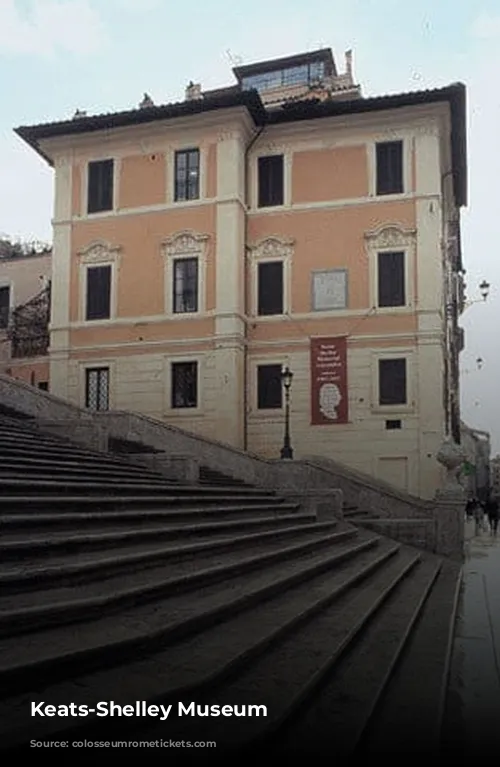The Spanish Steps, officially known as the Scalinata della Trinità dei Monti in Italian, are a breathtaking monument in Rome, Italy. They stand as a testament to 18th-century urban planning and connect the bustling Piazza di Spagna with the elegant Trinità dei Monti church and the picturesque Pincian Hill.
A French-Funded Masterpiece
The steps were built between 1721 and 1725 by architect Francesco de Sanctis. This magnificent project was funded by none other than Etienne Gueffier, the French ambassador, who left his mark on the steps with lilies from the Bourbon family coat of arms. The irregular-shaped piazza below the steps gets its name from the Spanish mission to the Holy See, which has been located here since the 17th century.
A Timeless Attraction for All
The Spanish Steps, with their 135 steps of travertine stone, are a must-see for any visitor to Rome. The grand staircase, with its inviting terraces and flights of steps, has captivated Romans and foreigners for centuries. It’s no surprise that the steps have been a favorite spot for relaxation, people-watching, and soaking up the Roman ambiance.
Fashion and Festivities
The Spanish Steps are not only a historical landmark but also a vibrant hub for fashion and festivities. Each July, the steps transform into a spectacular stage for “Women Beneath the Stars,” a dazzling fashion show showcasing the latest haute couture creations. This event attracts fashion enthusiasts from around the world, making it a truly unforgettable experience.

A Journey through History and Art
At the top of the steps, visitors encounter the Trinità dei Monti church, a beautiful example of French Renaissance architecture. This church, commissioned in 1502 by King Louis XII of France and consecrated in 1585 by Pope Sixtus V, stands as a symbol of the deep historical and cultural ties between France and Italy. Inside the church, one can admire the tomb of Daniele da Volterra and an Egyptian obelisk from the gardens of the ancient Roman author Sallust.
The Seat of Faith and the Power of Art
Across from the Trinità dei Monti church stands the Palazzo di Propaganda Fide, the seat of the Vatican’s Congregation for the Propagation of the Faith. This building, commissioned by Pope Gregory XV and designed by the renowned architects Bernini and Borromini, is a testament to the rich history of the Catholic Church. In front of the palace, an ancient Roman column rises proudly, adorned with statues of the Virgin Mary and the prophets Isaiah and Ezekiel, Moses and David. Each year, on December 8th, the Pope visits this column to commemorate the dogma of the Immaculate Conception of the Virgin, declared in 1854.
A Fountain with a Story
Just below the Spanish Steps, visitors encounter the Barcaccia Fountain, a masterpiece by Pietro Bernini and his son, Gian Lorenzo. This unique fountain, commissioned by Pope Urban VIII, commemorates the devastating flood of the Tiber River in 1598. The fountain’s depiction of a half-sunken boat and its stone bees, a symbol of the Barberini family, have made it one of the most iconic landmarks in Rome.
Literary Legacy and Artistic Inspiration
The Spanish Steps hold a special place in literary history as the site of the Keats-Shelley House, where the renowned English poet John Keats died in 1821. This house is now a museum dedicated to Keats, Shelley, and Lord Byron, offering visitors a glimpse into the lives of these literary giants. Just a short distance away, visitors can explore the Villa Medici, the prestigious seat of the French Academy. This late Renaissance building, built by Annibale Lippi in 1544, once housed a collection of paintings and archaeological artifacts, but it is now best known for its contemporary art exhibitions held in the garden between May and September. The Villa Medici also holds a darker secret as the place where Galileo Galilei was imprisoned by order of the Holy Office between 1630 and 1633.
The Heart of Roman Shopping
The area around the Spanish Steps is a shopper’s paradise, with a concentration of designer boutiques, jewelers, delicatessens, art galleries, and antique shops. The streets surrounding the Piazza di Spagna, including Via del Babuino, Via Margutta, Via Borgognona, Via delle Carozze, and Via Frattina, are renowned for their high-end offerings. Via Condotti, in particular, is considered Rome’s most elegant shopping district. This street, named after the water pipes (condotte) installed in the 16th century by Pope Paul III, is home to a wide array of luxury goods, making it a favorite destination for those seeking the finest fashion, shoes, handbags, and accessories.
A Gathering Place for Artists and Intellectuals
No visit to the Spanish Steps is complete without a stop at the historic Caffè Greco. This iconic café, opened in 1760, has been a gathering place for artists and intellectuals for centuries. The café’s list of regulars includes literary giants such as Casanova, Baudelaire, Franz Liszt, and Goethe, as well as composers like Mendelssohn, Wagner, and Nietzsche. Today, the Caffè Greco continues to be a popular destination for its charming atmosphere and its stylish interior, which is often used for readings and performances.
The Spanish Steps, with their rich history, stunning architecture, and vibrant atmosphere, stand as a testament to the timeless beauty and enduring appeal of Rome. From the grandeur of the staircase to the luxury of the surrounding shops and the literary legacy of the Keats-Shelley House, the Spanish Steps offer an unforgettable experience for every visitor.
